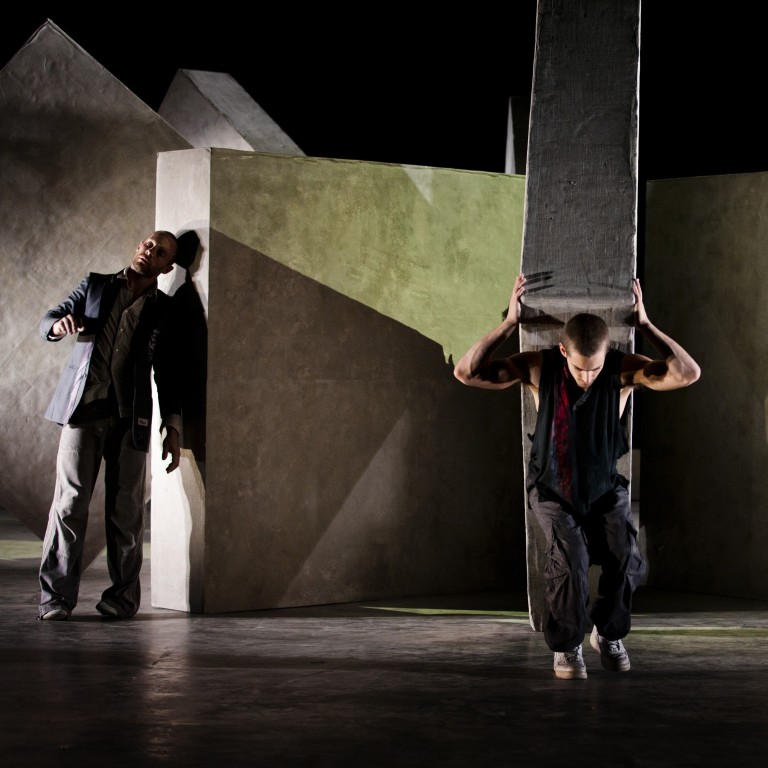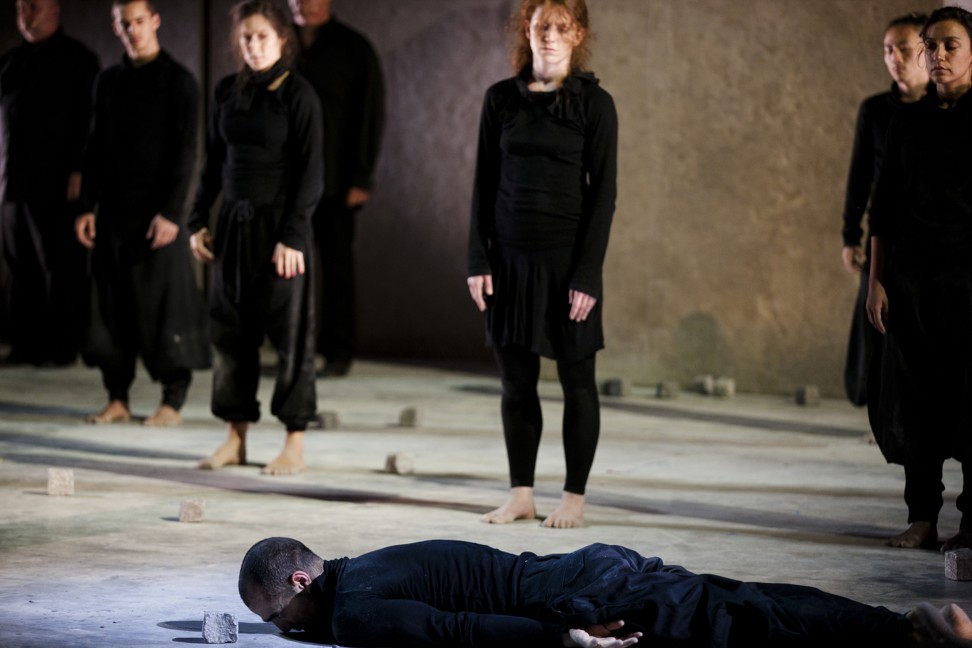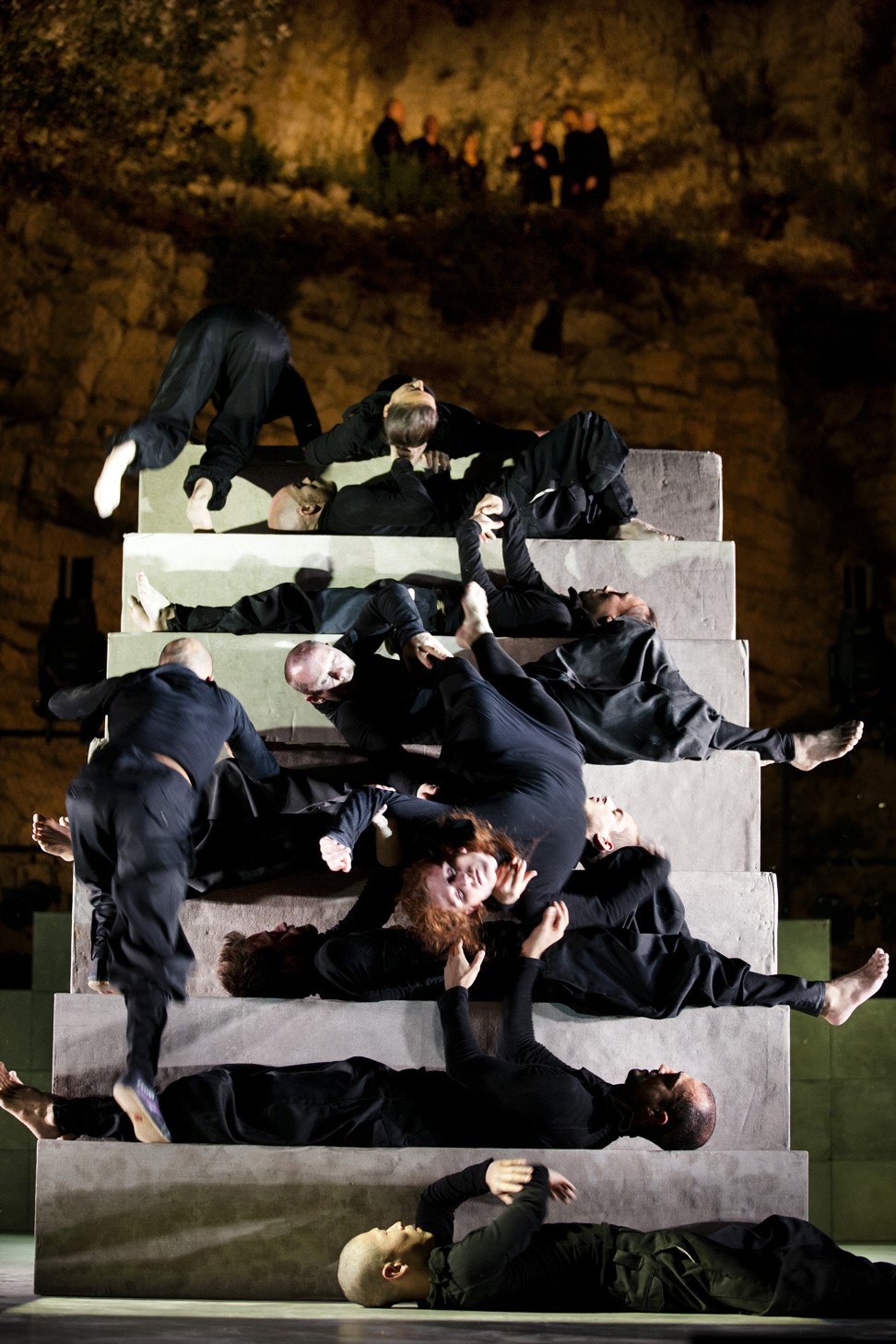
Puz/zle: award-winning dance puts human order – and disorder – under the microscope
- Belgian choreographer Sidi Larbi Cherkaoui’s evocative and cerebral show examines puzzle of how people fit together – and sometimes fail to connect
- Dancer’s arts company, Eastman, will perform production, focused on identity, relationships and boundaries, in Hong Kong on December 13 and 14
Belgian dancer and choreographer Sidi Larbi Cherkaoui has been a creative force in the world of dance for almost two decades.
Known for an egalitarian artistic approach to dance moves and body language, he has curated a wide variety of performances, ranging from contemporary dance to ballet and opera.
The complex themes in Puz/zle, such as evolution, society and human relations are the building blocks of how we behave everyday … it's interesting to step back and see the ways we do the things we do
His talent has been recognised with internationally acclaimed awards, including winning Britain’s Laurence Olivier Award for best new dance production in 2011 and 2014.
Cherkaoui, who is artistic director of his own company, Eastman, as well as the Royal Ballet Flanders, has collaborated with artists including singer Beyoncé, sculptor Antony Gormley, performance artist Marina Abramovic – even 20 Shaolin monks in his globally performed show, Sutra.
He is now bringing to Hong Kong one of those Olivier Award-winning productions, Puz/zle, which explores how certain connections succeed – and others fail to fit together – to create a distinct identity. The evocative and cerebral contemporary dance will be performed on December 13 and 14 at Kwai Tsing Theatre.
We spoke to him about the thinking behind the creation of his acclaimed production.
Why did you explore complex ideas, such as evolution, society, human relations and the origin of culture in Puz/zle?
These themes are the building blocks of how we behave on an everyday basis. A lot of it is almost a chemical reaction – we function almost like bacteria and insects.
It's interesting when you step back from humanity and see the ways in which we do the things we do, the exchanges, the reproduction, the approach of conquest and looking for symbiosis with our environment – this is all fascinating for me. In Puz/zle, I see it as a form of abstract behaviour.
One of the reasons the performance is called Puz/zle is because it looks at how we are constantly realigning the same elements again and again until we think it's going to fit, but somehow it never does
How does contempo rary dance provide insights into abstract ideas?
As contemporary dancers we can translate the abstract into a form of movement and find a way to express complicated and almost inexpressible things or ideas. I take this as a point of departure for exploration.
Contemporary artists have many ways to connect to information. I’ve always been fascinated by the work of [German dancer and choreographer] Pina Bausch and how she found a very contemporary approach to human relationships, specifically the interaction between women and men.

I have always thought that contemporary dance … has given me all the space and possible tools to connect to difficult and complicated subjects through the body. [Ultimately] we are a body that is holding a brain. We have a tendency to try to translate everything and communicate through words.
Dancers go back to the body and use it to communicate. Contemporary dance is an art form that gives a lot of space for complicated subject matters to be put into physicality.
Contemporary dance … has given me the space and tools to connect to difficult and complicated subjects through the body [and physicality] … We have a tendency to try to translate everything and communicate through words. Dancers go back to the body and use it to communicate
Does this make dance good at transcending cultural boundaries?
I find that contemporary dancers, no matter their discipline, culture or upbringing, are able to connect and to find a common language on stage. I am there as the choreographer to guide the process, create the context and help everyone tune in.
It's amazing to be able to bring dancers from around the world together. Of course, sometimes we clash. But disagreements can become points of learning, of education. People today are already so multi-educated, with different cultures merging in one individual.

Boundaries between people is a theme you explored with choreographer Akram Khan, who brings his final work as a solo dancer, Xenos, to Hong Kong next month …
Yes, Akram and I created Zero Degrees in 2005, and it was a wonderful artistic exchange. The subject matter was the borders between people, but also borders between countries.
The “zero degree” point is when water becomes ice, when one thing transforms into another, the moment a living body dies. There is a “before” and an “after”, but also a “during”. It’s a borderline moment when we do not know whether we are here or there.
Contemporary dancers, no matter their discipline, culture or upbringing, are able to connect and to find a common language on stage. I am there as the choreographer to guide the process, create the context and help everyone tune in
Think of it as an airport, or space between two countries, say Bangladesh and India – a no-go zone between them. The world is full of these in-between places that we are not necessarily conscious of, but they are very important as this is where we live.
What was your thinking behind the theme of building In Puz/zle, which sees dancers literally building structures from stones and blocks on stage?
My point of departure for Puz/zle was our relationship to stone. The piece was created in 2012 for the Festival d’Avignon, a prestigious and important festival in France.
The performance was to take place in the natural fortress of the Carrière de Boulbon, with concave stone walls. When I visited it, I knew I wanted to work with stone and explore how we use stone to create the architecture of our lives, our homes, our temples.
We are constantly moulding our world, shaping it into something that benefits us … as bees create beehives, we create our societies.

One of the reasons the performance is called Puz/zle is because it looks at how we are constantly realigning the same elements again and again until we think it's going to fit, but somehow it never does.
Society is constantly saying “It should be done like this”, “No, it should be done like that” … We have the same material we had with the dinosaurs – it’s not called fossil fuel for nothing, it’s literally fossils – and our world today is made out of the remains of the worlds that were here before us.
We build our tables and chairs and everything out of the same material, recycled; it’s incredible and makes every object have such a deep and long history.
There is a moment in Puz/zle when there is a big wall, like the wall of a country that refuses to let foreigners in, and it felt very natural moment for one of the performers to express himself and his experience through graffiti
That’s why Puz/zle has an epic quality to it. It feels almost like a ritual that tries to embody, very abstractly, the big themes of human evolution and the evolution of our planet, from something simple, like bacteria or insects to tormented people shooting other people.
Why did you include graffiti art in Puz/zle, which is unusual on a dance stage?
It came about naturally when one of the dancers suggested it might work at a particular point in the performance.
I see tagging as almost like cavemen who started drawing on walls to communicate. Drawing was one of the first ways to communicate. Today we still have cartoons and paintings and it’s still important, but also very primal …
There is a moment in Puz/zle when there is a big wall, like the wall of a country that refuses to let foreigners in, and it felt very natural moment for one of the performers to express himself and his experience through graffiti.

Is the music a celebration of multiculturalism?
The word multicultural doesn’t really mean that much any more, I prefer to say that there is a Japanese percussionist and flautist, Kazunari Abe, a Lebanese singer, Fadia Tomb El-Hage, and [a group of male] Corsican singers.
There is a fascinating relationship between this seemingly unrelated music: both Abe and the Corsican singers come from islands and the way that their music develops, even though they are from very different cultures, is related to their similar geographies.
[But] it’s not like a potpourri, of throwing all these things together; there is a deeper process of assembling the elements that feel right to me to put together. I love the idea of voice verses flutes. And percussion, which is very rhythmical, versus polyphony … I was interested in the pieces of my puzzle all coming together.

You also include electronic music in the performance …
Polish electronic music composer Olga Wojciechowska composed music … creating a sort of science fiction atmosphere as a counterpoint to the live music.
She is also a very gifted violinist: you can hear her playing, woven in to her 2001: A Space Odyssey-kind of electronic music.
The singers – with El-Hage’s unique, very strong female voice contrasting with the many male Corsican voices – then respond to the electronic music and live music.

